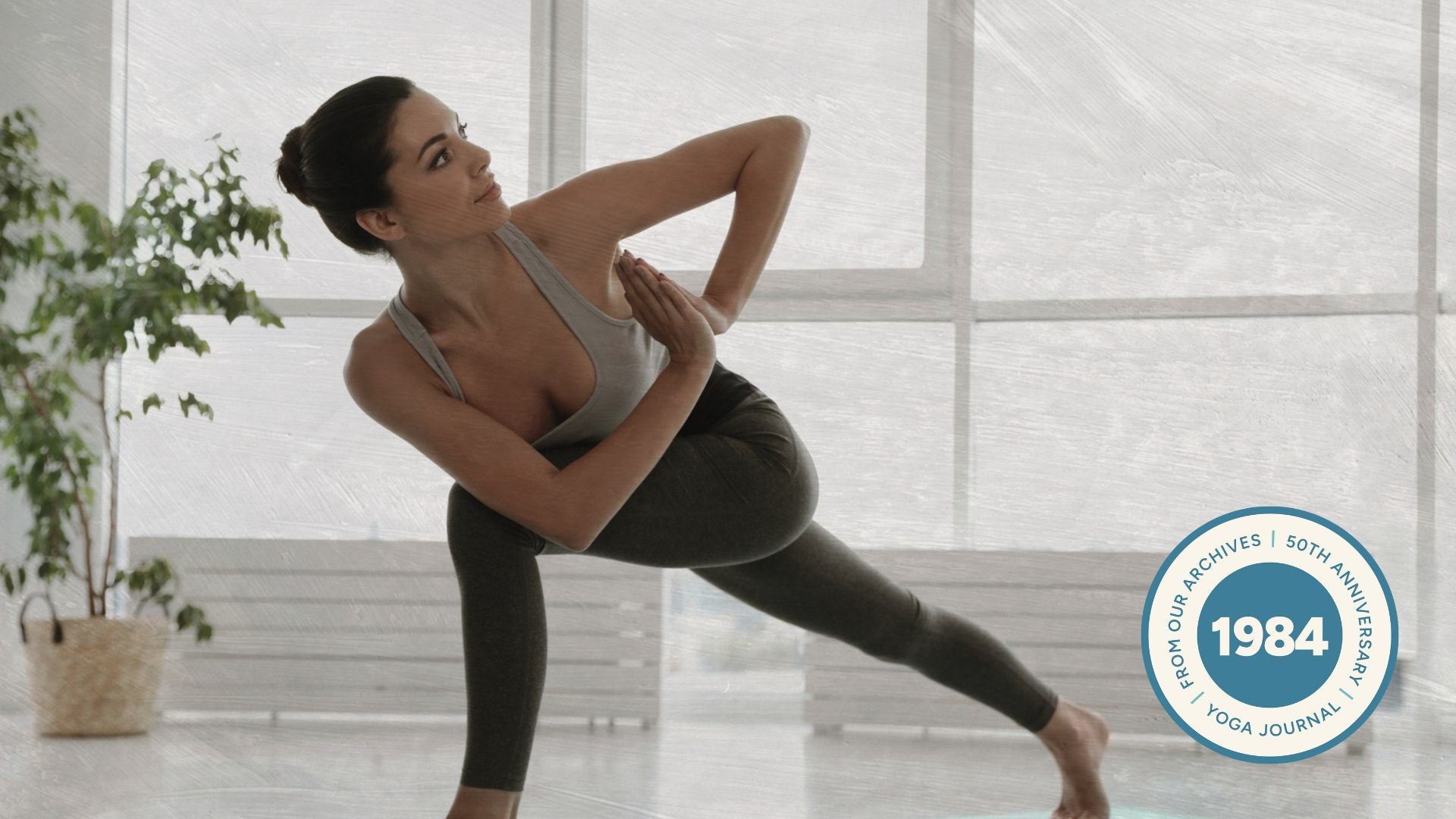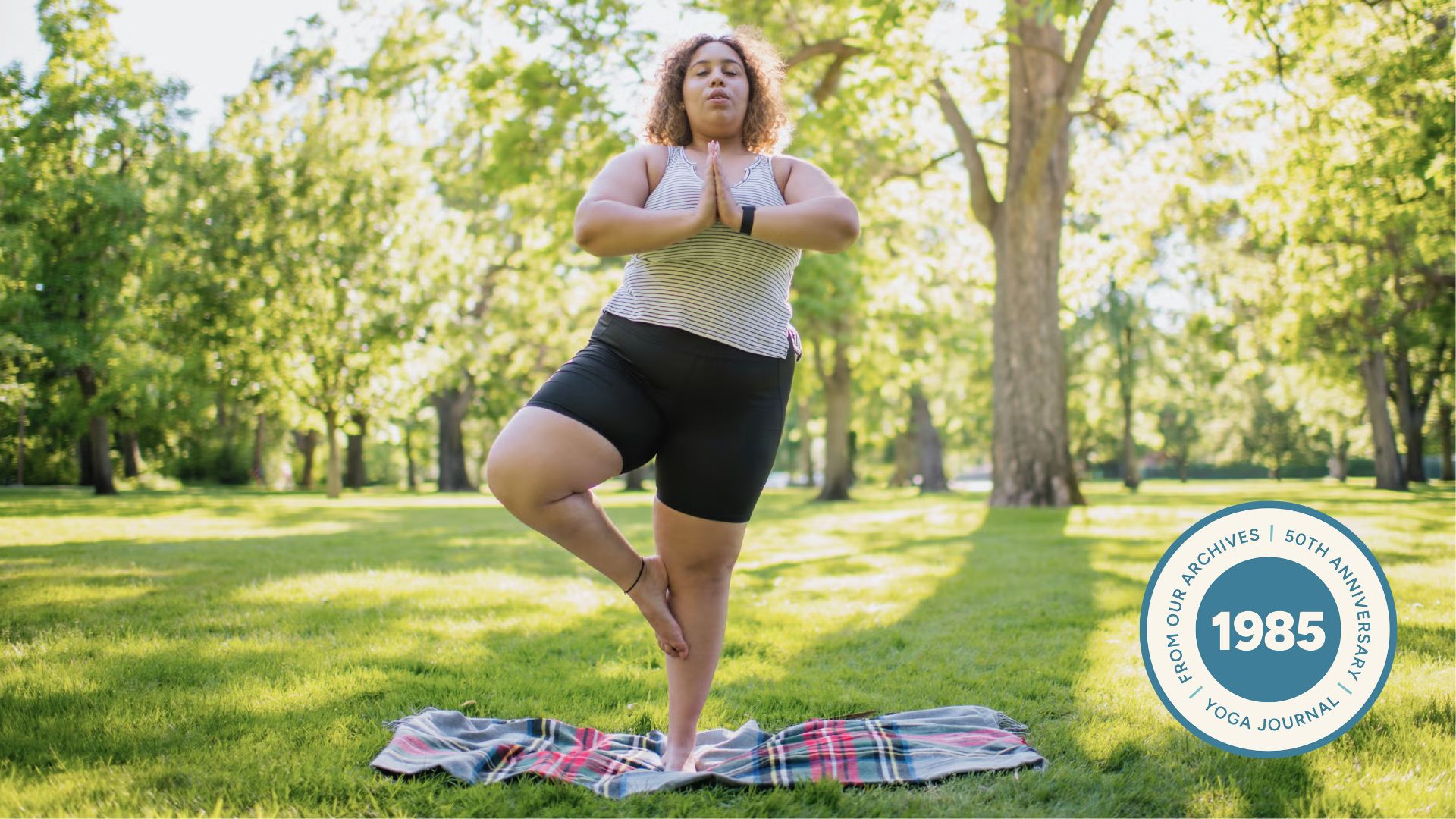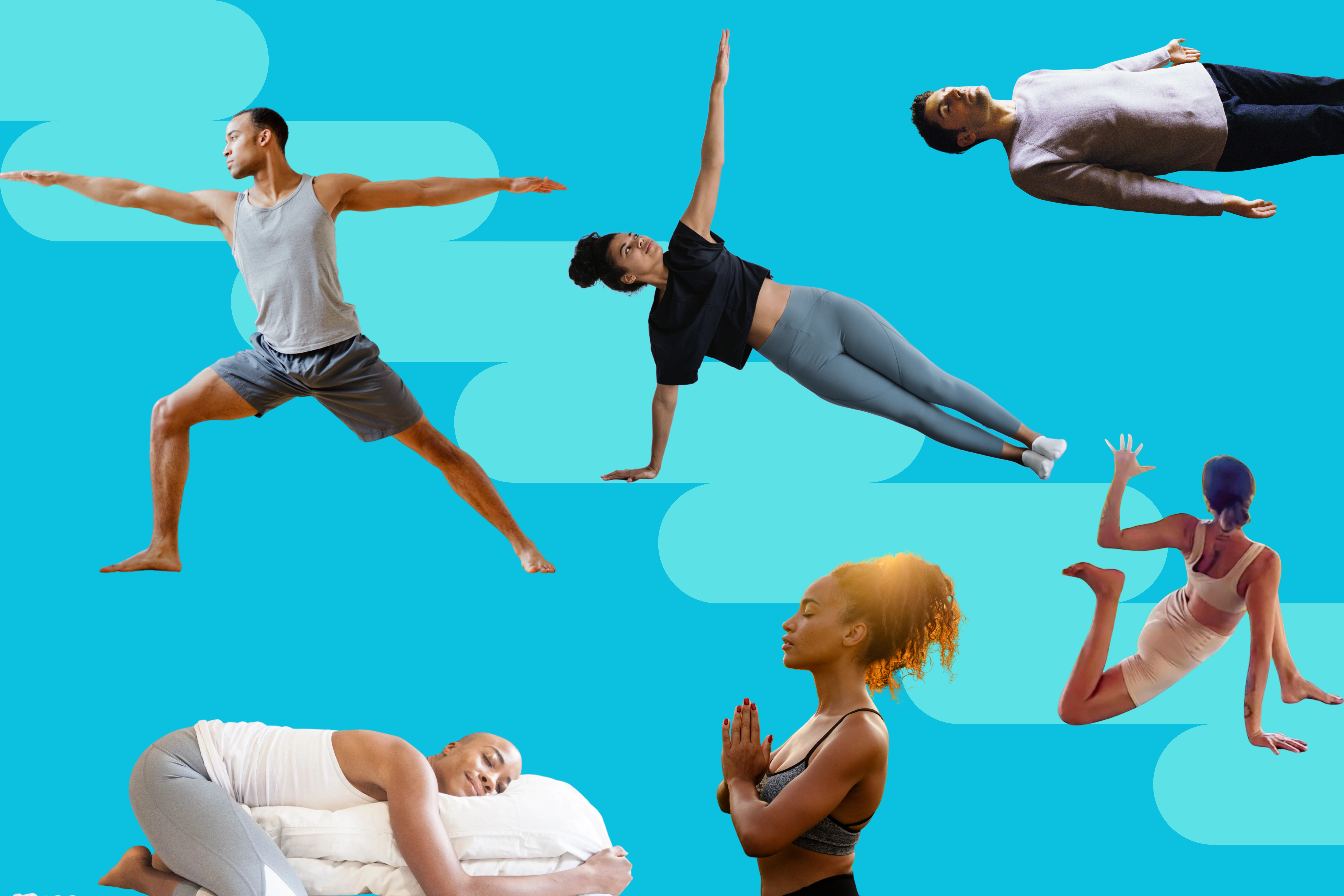“], “filter”: { “nextExceptions”: “img, blockquote, div”, “nextContainsExceptions”: “img, blockquote, a.btn, a.o-button”} }”>
Heading out the door? Read this article on the new Outside+ app available now on iOS devices for members!
>”,”name”:”in-content-cta”,”type”:”link”}}”>Download the app.
Tilting your head back can be a surprisingly controversial movement in yoga class. Some teachers cue it quickly with the vaguest phrasing. You may have heard, “Tip your head back…or don’t,” in poses such as Upward-Facing Dog or Camel. Other teachers completely avoid cervical or neck extension and cue even gentle movements such as neck rolls by saying, “Bring your head down and to the sides, but don’t let it drop back.” Either approach may leave students unsure as to whether neck extension is right for them or even fearful to attempt it at all, convinced that it’s dangerous. But is it?
There are certainly reasons to be mindful of the neck. In it are many important and sensitive channels, including its four carotid arteries supplying blood to the brain, six jugular veins draining blood back to the heart, and eight pairs of nerves innervating the shoulders, arms, and hands.
But that doesn’t mean there is a general need to avoid or fear neck extension, says Ariele Foster, doctor of physical therapy, yoga teacher, and founder of Yoga Anatomy Academy. “For most people, there are no risks of extending your neck. It’s part of the natural range of neck motion,” she says. However, there are exceptions to this rule for those experiencing underlying injuries or conditions.
So how do you know whether neck extension is right for you, and if it is, how to approach it safely?
Potential Benefits of Neck Extension
The slow and unweighted neck extension students usually encounter in yoga classes–tipping their heads back for a few breaths as they do Reverse Warrior or Cobra– is generally safe, says Rachel Land, Yoga Medicine instructor and podcaster. That is, as long as it feels good and isn’t abrupt or forceful.
Regularly tilting your head back can help you maintain general neck mobility and ensure that you remain able to look up when you need to. According to Land, it also helps lengthen the neck flexors, making it an important counterposition for time spent looking down at screens.
Not only is cervical extension part of the vocabulary of healthy neck movement, it may feel powerful from an energetic standpoint. In some views, the free flow of energy through the throat chakra helps invigorate creativity and can empower you to speak your truth with clarity and grace.
How to Know You’ve Gone Too Far
Students actually become more susceptible to neck injuries not by extending their necks, but by ignoring their physical limits. “There is a difference between spending a few seconds simply at the end range of motion of your neck and stretching past it,” says Foster.
For instance, a student pushing themselves into what they perceive a pose “should” look like may zealously bring the back of their head to their upper back and their gaze to the wall back behind them, disregarding their end range. This increases the risk of muscle strains, disk problems, and nerve injuries.
Some poses also increase the risk to the neck by adding weight. In Chin Stand (Ganda Bherundasana), for example, the body is balanced on top of an extended neck, which may be too much for some practitioners. Renowned yoga instructor Richard Freeman allows for this, explaining, “It might work for a flexible, young person who can place more of their weight on their chest and hands.”
However, Foster cautions that the rewards of Chin Stand may not outweigh its risks. “Our bodies are incredibly resilient, but there is no functional need to put most of your body weight through your neck while it is in an extreme position—or in general,” she says.
How do you know you’ve gone too far? The average range of cervical extension is around 50 degrees. This is about equivalent to looking straight up toward the ceiling while your spine is relatively neutral (not craning your neck back to look at the wall behind you).
At your end range, you may feel a very real limit. “It can be like getting to the end range of your elbow—you’re just stopped,” says Land. If you feel discomfort, dizziness, nausea, or hear a lot of clicking in your neck, you’ve probably exceeded your range of motion, adds Foster.
The muscles of the face or mouth scrunching up can also indicate strain. “The actions of the neck are often translated into the face and the mouth,” Freeman says.
And don’t forget about your breath. Students who have passed the limit of comfortable neck extension may breathe unevenly, perhaps grunting or groaning. (Freeman has even heard the occasional growl.)
If you perceive any of these signals, advises Foster, “Back off and do ten percent less.” If doing less doesn’t stop the symptoms, return to a more neutral neck position. That doesn’t mean that neck extension is off-limits forever; over time, and with a few tips, you may find the movement becomes more comfortable.
Who Isn’t Neck Extension Right For?
No movement is right for everyone, and some conditions may make it more challenging to approach neck extension.
“Spinal extension generally decreases the space available for the nerve roots, and if that space is already narrower than normal—for example, if someone has stenosis, or spondylosis—it could cause nerve pain,” says Land.
There are others who need to approach this movement with caution or, in some instances, avoid it altogether. That includes those with blood pressure issues such as orthostatic hypotension and postural orthostatic tachycardia syndrome, as well as those who have generalized hypermobility or other collagen-related conditions such as Ehlers Danlos Syndrome, according to Foster. She also points to research citing some conditions that predispose people to cervical instability, in which case it’s generally advised to limit tilting the head back. These can include Down’s Syndrome, Morquio Syndrome, and Rheumatoid arthritis.
Students with any of these conditions, or who feel discomfort with even mild neck extension, can seek specific movement recommendations from a medical professional.
Tips for Comfortable Neck Extension
There is a vast middle ground between not allowing any neck extension at all and pushing it to an extreme. Most students can safely explore that middle ground and find a range of motion that feels right for them.
1. Try a Conceptual Shift
Have you been thinking in terms of “dropping” your head back when you move your neck into extension? What if you instead look for a “lift”?
“Personally I don’t feel good if I drop my head back, but I’m happy to lift my chin,” says Land. As she lifts her chin, she focuses on creating more space between the base of the skull and top of the neck.
Another cue often given for neck-extension poses is to look up, but Freeman suggests the opposite. “You could try looking down.” Gazing toward your nose–or toward your hands, if your head is tilting back in a pose like Warrior 1–may cause you to slightly lessen your neck extension by engaging the muscles that flex the neck (the opposite of extension).
And for those who like imaginative cues, Freeman suggests a popular visualization: “Imagine cobra hoods spreading at the back of your head, and coming up over the crown of the head.” The sense of having your head cupped by the hood of a cobra—or cradled in invisible hands—may help you feel more supported.
2. Visit Neutral First
“Most people do tend to have a forward-head position to some extent, since everything we do tends to be in front and down,” says Land, referring to activities like cooking, manual labor, child care, and, of course, screentime.
Tilting the head back when the head and shoulders are already forward can be uncomfortable and extreme.
Moving into a more neutral spinal position first and familiarizing yourself with it can make it easier to move the neck backward into extension. Land explains neutral as sitting or standing upright with the weight of your head central over your ribcage and your gaze roughly level.
To identify a neutral neck position, Land suggests lying on the floor or standing against the wall for feedback. With the back of your head against the wall or the floor, gently nod your head until you feel that your chin is neither tilting upward nor tucked against your neck and has found its resting point.
3. Set Up Your Shoulders for Success
“Some people might feel better in neck extension if their shoulder blades are retracted [drawn toward each other],” says Foster. Once your shoulder blades are drawn toward each other, you can try extending the neck as far as feels good for you.
If you find your shoulder blades creeping up and shortening the back of your neck uncomfortably, try looping a hand towel around the base of your neck. Pull the ends gently downward to keep your shoulder blades down. Inhale and look up and back as far as is comfortable for you; exhale and return to neutral.
4. Give Yourself an Assist
You can work your way up to neck extension by offloading the weight of your head into your hands, suggests Land.
“A firmly rolled towel or strap around the back of the neck is also nice to help hold its weight,” she says. Hold on to either end and gently lift it with your hands while keeping your gaze straight ahead. After a few breaths, begin to tip your chin up. This also helps prevent the extension from only occurring between the first vertebra and your skull and engages the muscles of your cervical spine.
These assists can serve as preparation for—or variations of—neck extension poses, from Camel to Warrior 1.
5. Cultivate Awareness and Slow Down
As with any pose, slowing down and tuning into subtle, inward sensations can promote a greater sense of ease and self-awareness before moving into neck extension.
Freeman guides students to relax their necks, their throats, their tongue, their palate, their lips. He invites them to imagine that they are smelling something nice and to feel the subtle movement of breath through their nostrils. “It’s almost like a subtle smile that occurs,” he says of the release of tension. “The pressure to achieve any particular pose is eliminated.”
Cultivating awareness of your inner state can also mean considering neck extension from a holistic perspective. A variety of emotional and psychological factors can contribute to how comfortable your neck (and body) feels. Freeman suggests practicing compassion for yourself and those around you—perhaps by trying loving-kindness meditation.
If you approach the world more gently, and perceive the world as a friendlier place to be, you may move through it with more ease.







